 W
WA referendum on changing the electoral system to a two-round system was held in Romania on 25 November 2007, on the same date as the election to the European Parliament. The referendum was called by President Traian Băsescu on 23 October 2007 when the Parliament of Romania failed to meet a deadline set by him to pass these changes.
 W
WAiadava was a Dacian town in the Remesiana region, present day Bela Palanka, Serbia.
 W
WThe Akkerman Convention was a treaty signed on October 7, 1826, between the Russian and the Ottoman Empires in the Budjak citadel of Akkerman. It imposed that the hospodars of Moldavia and Wallachia be elected by their respective Divans for seven-year terms, with the approval of both Powers. It also provided for the retreat of Ottoman forces from both Danubian Principalities after their prolonged stay following military actions in 1821, and Tudor Vladimirescu's uprising. The Ottomans also agreed to cede to Wallachia the control over the Danube ports of Giurgiu, Brăila and Turnu. The convention also tackled the Serbian question: in article 5, autonomy for the Principality of Serbia was given, and the return of lands removed in 1813. Serbs were also granted freedom of movement through the Ottoman Empire. Sultan Mahmud II's repudiation of the convention triggered the Russo-Turkish War (1828–1829).
 W
WThe Banat of Craiova or Banat of Krajowa was a province of the Habsburg Monarchy. It was created after the country obtained Oltenia in 1718 after a war with the Ottoman Empire. Through this war, the Habsburg Monarchy also conquered Banat and Serbia. Nevertheless, Habsburg rule over Oltenia only lasted two decades. It ended in 1739, when the Ottoman Empire recovered Serbia and Oltenia after the Treaty of Belgrade. Banat was kept by the Habsburg Monarchy and its successors until 1918.
 W
WConstantin Cantacuzino was a Romanian nobleman and historian who held high offices in the Principality of Wallachia. He was a humanist scholar who drew the first local map of Wallachia in 1700, and started to write a History of Wallachia which remained unfinished. In his History of Wallachia, he "accepted a Daco-Roman mixing" in connection with the origin of the Romanians. A promoter of a prudent anti-Ottoman policy, he was executed together with his son Ștefan.
 W
WCotnari is a village and the center of the eponymous commune in Iași County, Romania, in the historical region of Western Moldavia. It is located north-west of Iași and south of Hârlău, in a major wine-producing region of Romania, and is famous for the wine variety known as Grasă de Cotnari. Cârjoaia, the forest of Dumbrava Roșie, and other sites in Cotnari are regional tourist spots.
 W
WDimitrie Cozacovici was a Romanian historian. He was one of the founding members of the Romanian Academy.
 W
WCroats are an ethnic minority in Romania, numbering 6,786 people according to the 2002 census. They mainly live in the southwest of the country, particularly in Caraș-Severin County. A large part of them are of Bunjevic extended families. Their ancestors were Vlachs of Bosnia. Due to Otoman invasion, a large group called Buni escaped to Croatian lands where they passed to Catholicism. As a result they were considered Croatians. The advance of Otomans made them to flee to Hungarian and Romanian lands. Declared Croatians form a majority in two Romanian localities: the communes of Carașova and Lupac. In these communes, Croatian is an officially recognised language, with signage, education and access to justice and public administration being provided in Croatian alongside Romanian.
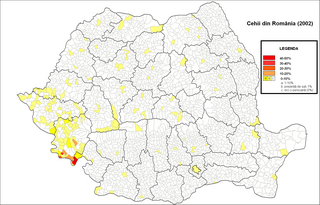 W
WThe Czechs are an ethnic minority in Romania, numbering 3,938 people according to the 2002 census. The majority of Romanian Czechs live in the south-west of the country, with around 60% of them living in Caraş-Severin County, where they make up 0.7% of the population.
 W
WDacia Aureliana was a province in the eastern half of the Roman Empire established by Roman Emperor Aurelian in the territory of former Moesia Superior after his evacuation of Dacia Traiana beyond the Danube in 271. Between 271/275 and 285, it occupied most of what is today northwestern Bulgaria and eastern Serbia. Its capital was in Serdica.
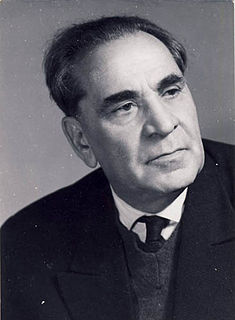 W
WConstantin Daicoviciu was a Romanian historian and archaeologist.
 W
WAnghel Demetriescu was a Romanian historian, writer and literary critic, who became a member of the Romanian Academy in 1902.
 W
WBartolomeu Dragfi de Beltiug was Voivode of Transylvania from 1493 until 1499, Count of the Székelys from 1479 until 1488, Comes Perpetuus of Middle Szolnok. He was a member of the House of Dragoș and a descendant of Dragoș, Voivode of Moldavia.
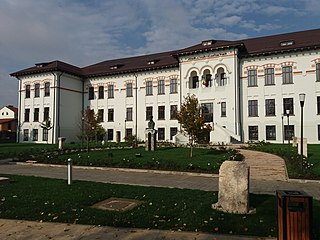 W
WThe Iron Gates Region Museum is a museum in Drobeta-Turnu Severin, Romania.
 W
WLétavértes or Leta Mare is a town in Hajdú-Bihar county, in the Northern Great Plain region of eastern Hungary.
 W
WLőkösháza is a village in Békés County, in the Southern Great Plain region of southeast Hungary.
 W
WThe Lovers of Cluj-Napoca are a pair of human skeletons discovered in 2013 by archaeologists in the cemetery of a former Dominican convent in Cluj-Napoca. The couple are believed to have lived between 1450 and 1550 - between the year the convent was established and the year the graveyard was secularised. Analysis by archaeologists confirmed that the skeletons belong to a man and a woman around 30 years of age. The couple were buried facing each other, and with their hands interlocked.
 W
WMihăilești is a town located in Giurgiu County, Muntenia, Romania. It administers three villages: Drăgănescu, Novaci and Popești.
 W
WThe Motru is a right tributary of the river Jiu in Southwestern Romania. It discharges into the Jiu in Gura Motrului, near the town Filiași. Its length is 134 km (83 mi) and its hydrological basin size is 1,895 km2 (732 sq mi).
 W
WThe Museum of Banat is a museum in Timișoara, Romania, headquartered in Huniade Castle. It was founded in 1872 under the name "Societatea de Istorie și Arheologie". It hosts the largest collection of archaeological objects Banat. The ground floor houses the Parța Neolithic Sanctuary, a unique monument in Europe.
 W
WAn oligarch or provincial lord was a powerful lord who administered huge contiguous territories through usurping royal prerogatives in the Kingdom of Hungary in the late 13th and early 14th centuries.
 W
WPeregu Mare is a commune in Arad County, Romania, on the Arad Plateau, at the western border of Romania. The commune stretches over 3095 ha and is composed of two villages, Peregu Mare and Peregu Mic (Kispereg).
 W
WThe Permanent Electoral Authority is the Romanian agency that manages the electoral infrastructure between the elections. During the elections, the authority is the Central Electoral Bureau, specially constituted for each election.
 W
WBaron Péter Perényi was a Hungarian aristocrat who held the office of voivode of Transylvania from 1526 to 1529. He was an influential protector of Protestant preachers in the Kingdom of Hungary.
 W
WPusztaottlaka, is a village in Békés County, in the Southern Great Plain region of south-east Hungary.
 W
WRâmnicu Sărat is a city in Buzău County, Romania, in the historical region of Muntenia. It was first attested in a document of 1439, and raised to the rank of municipiu in 1994.
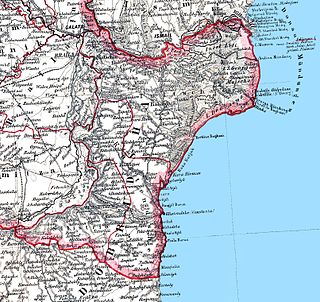 W
WSilistra Nouă County was a county (județ) of Romania, in Northern Dobruja, with its capital city first at Rasova, later at Cernavodă and finally at Medgidia. It was established on 13 November 1878 and abolished on 1 April 1879. After this, it was integrated into Constanța County, which became the only county in Romanian Dobruja along with Tulcea County. Silistra Nouă County was composed of two plăși ("districts"): Plasa Medgidia and Plasa Silistra Nouă. Despite its name, it did not incude the city of Silistra.
 W
WVekerd is a village in Hajdú-Bihar county, in the Northern Great Plain region of eastern Hungary.
 W
WVulcan is a city in Hunedoara County, Transylvania, Romania. With a population of 22,906, it is the second-largest city in the Jiu Valley. It administers two villages, Dealul Babii and Jiu-Paroșeni (Zsilymacesdparoseny).
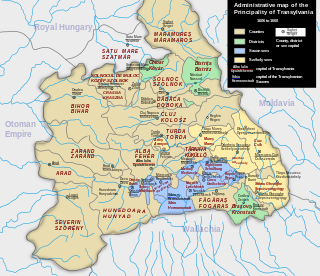 W
WZaránd County was an administrative unit in the medieval Kingdom of Hungary and in the Principality of Transylvania.